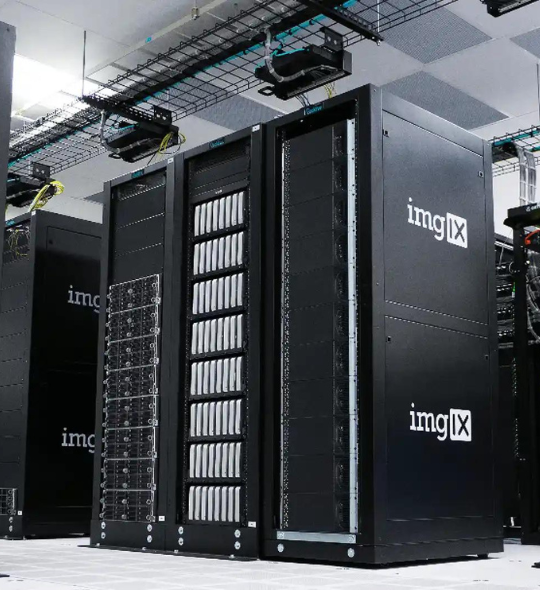
The energy sector needs to embrace digital business models to create a 21st century grid.
TL:DR
-
Digital energy companies are more flexible and responsive, allowing them to flourish in the evolving energy industry.
-
More needs to be done to improve data accessibility if we want to realize cleantech’s full potential.
-
Solving the disconnect between energy users, funding, and utilities is vital to accelerating the adoption of clean technology.
The energy sector is becoming more decentralized as more retailers, generators, and other players operate in the industry than ever before.
The industry is also increasingly distributed — generation and storage options are moving away from single, large sources towards a more diverse, spread out network of connected assets.
As the energy sector gets more complex and diverse, companies need to adopt flexible, digital business models to successfully navigate the modern grid.
This ‘digital transformation’ will unlock new services and savings opportunities for customers, but more needs to be done to reduce barriers to the free flow of data.
Digital business models boost innovation
Digitizing the energy sector means shaking up how we think about energy services. Specifically, energy users need to be empowered to manage their usage and create energy plans that best suit them. The days of electricity being a one-way conversation from utilities to customers are gone.
To support this movement, assets and organizations need to exchange data easily. This drives innovation (e.g. new clean technologies or business models) and generates energy savings for customers and the grid.
Whether optimizing asset efficiency, engaging in electricity arbitrage, combating peak prices, or switching to renewables, there are many opportunities to save on energy. And data is at the heart of all of them.
This is what we mean by energy’s ‘digital transformation.’ Digital transformation offers new business opportunities for legacy energy companies, and is bringing tech companies like Amazon and Google into the energy space.
We need to speed up the evolution of the smart grid, and accelerate the rate of cleantech adoption.
Alongside big players, the energy sector is welcoming a wave of digital energy startups.
The spread of distributed generation sources (e.g. solar and wind) and the Internet of Things (IoT) is creating new business models. Digital startups captured $900 million in early stage venture capital in 2020, three times the amount from 2016.
Digital energy start-ups are vital because much of the hardware we need to modernize the grid and fight climate change is already available—the right software will unlock cleantech’s full potential.
Software-based business models are more flexible, customizable, and intuitive for end-users than legacy, hardware-focused models. This lets companies leverage cleantech solutions, while meeting customer expectations about digital efficiencies (and the savings they generate).
That said, in order to realize these savings we need to speed up the evolution of the smart grid, and accelerate the rate of cleantech adoption. This is where digital energy companies can have the greatest impact.
As the IEA notes:
“by lowering the most common barriers to energy transition investment — high upfront cost, lack of access to finance, high perceived risk […] these digitally-enabled businesses are making clean energy solutions more accessible and affordable. Acting either as investors themselves or by mobilizing other sources of capital, energy start-ups can help to identify and fill funding gaps.”
More affordable and accessible energy solutions let more energy users take charge of their usage and data. The energy space is extremely complicated, so empowering energy users in this way requires seamless cooperation between utilities, users, and third-party energy service providers.
Currently, this process is far from smooth as customer data remains siloed and difficult to access.
We need to remove barriers so data can flow
Protecting customer data is important, and legislation — like the EU’s 2019 electricity market directive — has been created to ensure third-parties adhere to strict data protection rules.
These rules are well intentioned, but they also create barriers, and make it harder for digital businesses to help energy users save. Businesses need support from governments and regulators to iron out these issues.
As things stand, it is nearly impossible for third-parties to get customer usage and billing data from utilities. Even third-parties that are a part of government clean technology programs face hurdles.
Solving the disconnect between energy users, the funding ecosystem, and utilities is vital.
For example, coordinators at the Southwest Energy Efficiency Project (SWEEP) explained at a Department of Energy webinar that they tried to access utility data, and “[…] after 20 minutes of being transferred we finally got to the fact that [the utility] couldn’t provide that information to us.”
The crux of the issue is that utilities are unwilling to provide customer usage data because they claim it is too confidential. This creates a disconnect with customer expectations, as many energy users permit third parties access to their sensitive financial information, for example to facilitate project funding.
Solving this disconnect between energy users, the funding ecosystem, and utilities is vital if we want to accelerate the adoption of clean technology.
How EnPowered connects projects with the funding they need
Tackling this disconnect is EnPowered’s main goal. Without accurate usage data, energy users can’t make informed decisions about which cleantech solutions best suit their needs.
When companies are uncertain they hesitate, protect their capital, and worry about risk and return on investment. High perceived risk prevents too many projects from starting because energy users wait too long or because they can’t secure enough capital.
EnPowered Payments is an on-bill payments platform that allows energy users to pay for solutions through their electricity bills with a portion of their savings. Payments minimizes risk for energy users, allowing them to take possession of their solution right away with no upfront costs.
Ready to learn more? Contact us today to discover how EnPowered leverages usage data to help energy users save more and solution providers unlock more deals.





